|
Early Stages and Newborn
Stars
- Initial collapse: The cloud
gets warmer but energy escapes as (infrared) radiation.
- Fragmentation: The cloud splits
into fragments, 0.01 pc wide or so, each of which will produce
a star, or a multiple system, depending on its rotation.
- Protostar: Dense enough not
to be transparent; Becomes hotter, and is initially very bright;
Has a surface, emits IR and protostellar wind.
- Newborn star: T above
10 MK in the core ignites fusion of H into He and halts collapse.
- Arrival on the Main Sequence: After
a total of 40-50 Myr for the Sun; (more than 100 Myr for small stars,
less than 1 Myr for massive ones).
- Range of sizes: Masses range
from 0.08 solar masses (below that value objects do not have
enough mass for H fusion to start and are not considered stars)
to about 100 solar masses (more massive objects would be unstable,
the heat and pressure of the forming stars ejecting any extra
material).
- Large stars: Some very large
stars exist; the Pistol Star has 100 solar masses and LBV 1806-20,
150 (it is 40 million times brighter than the Sun); Even more
massive stars may have formed in the early universe, when the
abundance of heavy elements was very low.
|
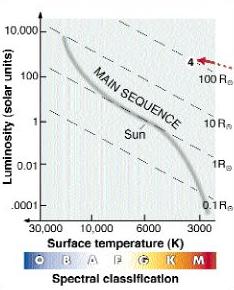
Brown dwarfs: Objects below 0.08 solar
masses (between 13 and 74 Jupiter masses), in which there can be some
D burning (collapse halted not by temperature); They are faint and hard
to see, but may be very common (for example in stellar nurseries like r Oph). |
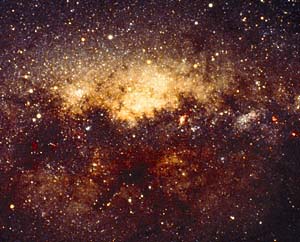
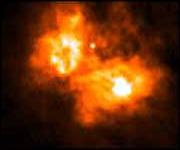


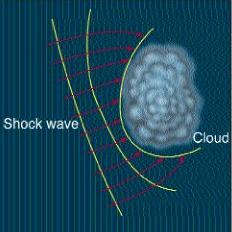
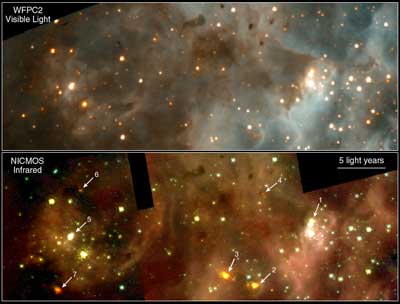
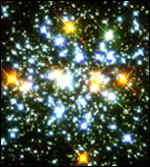
![]()